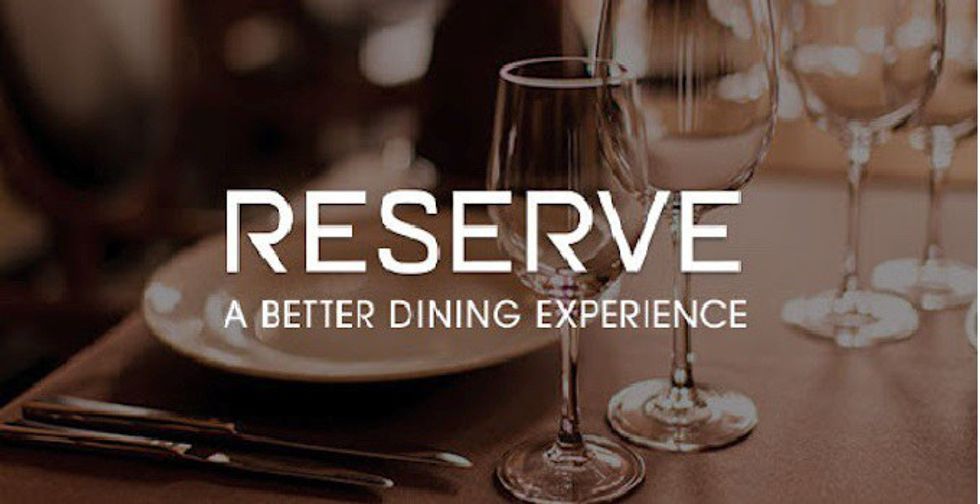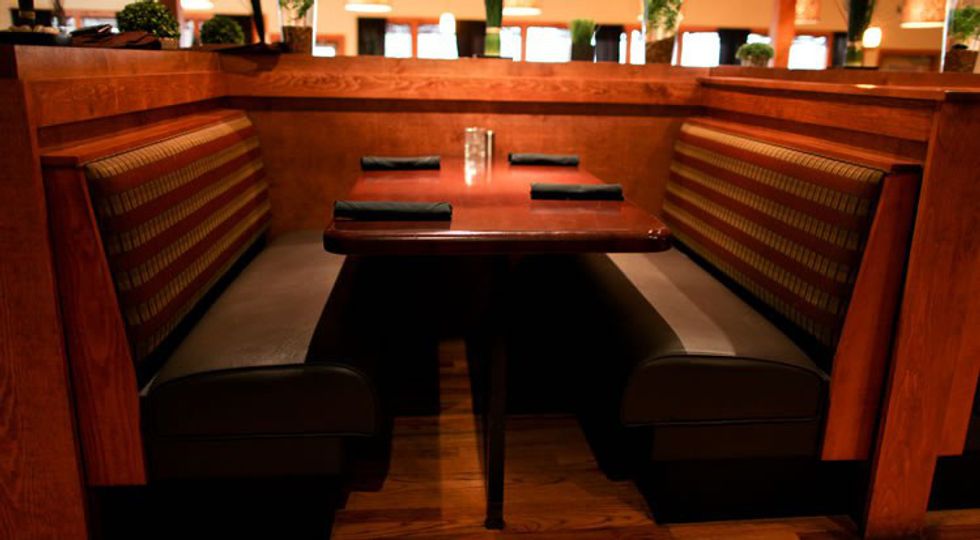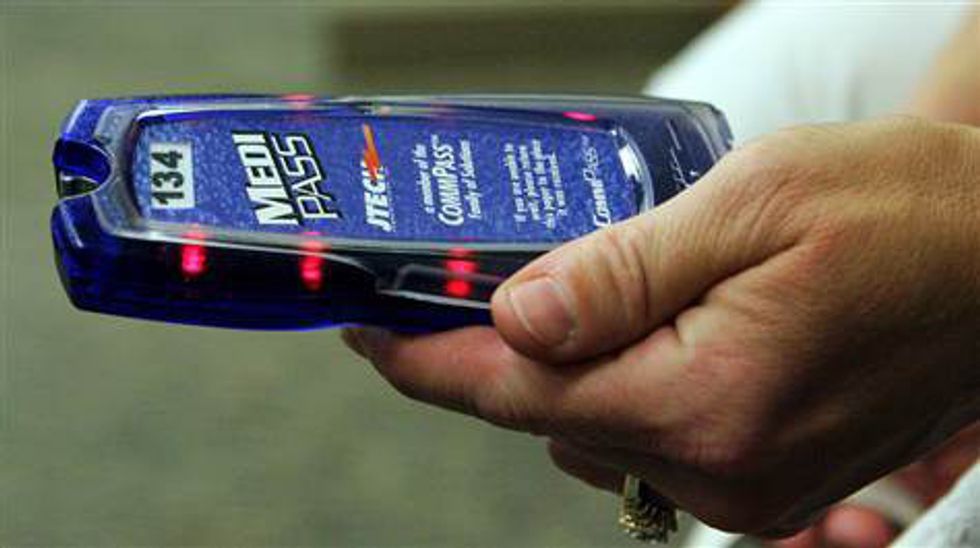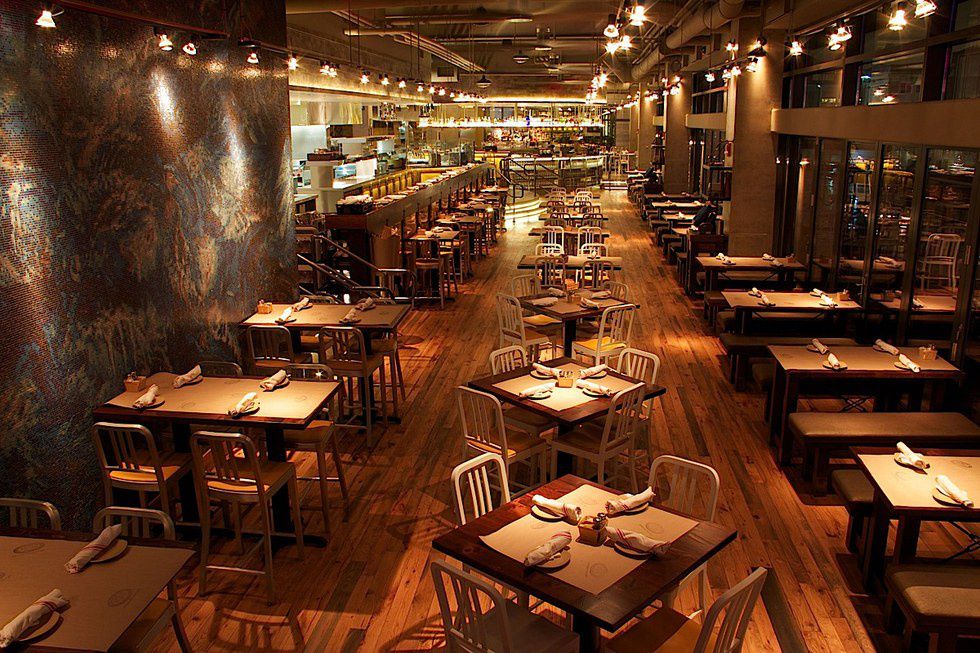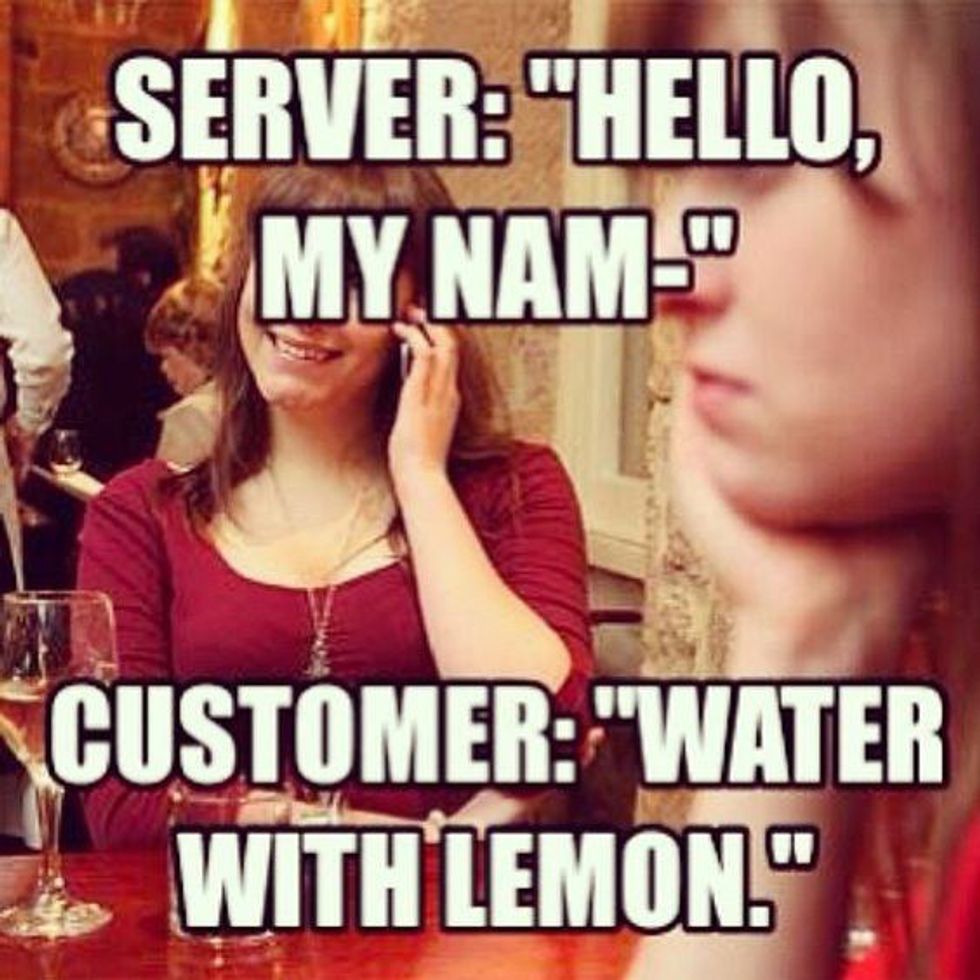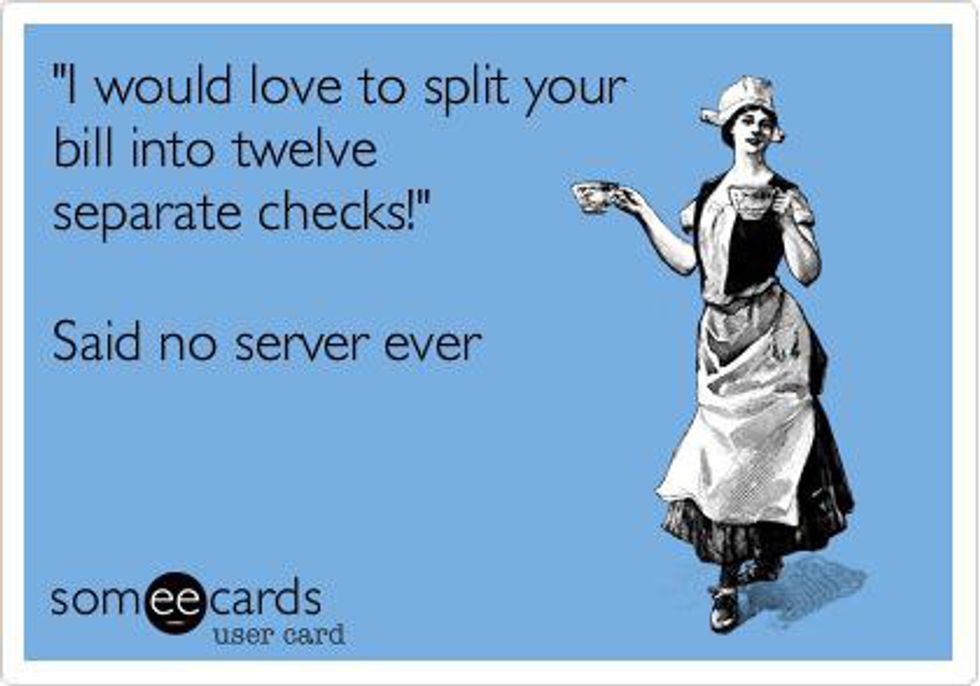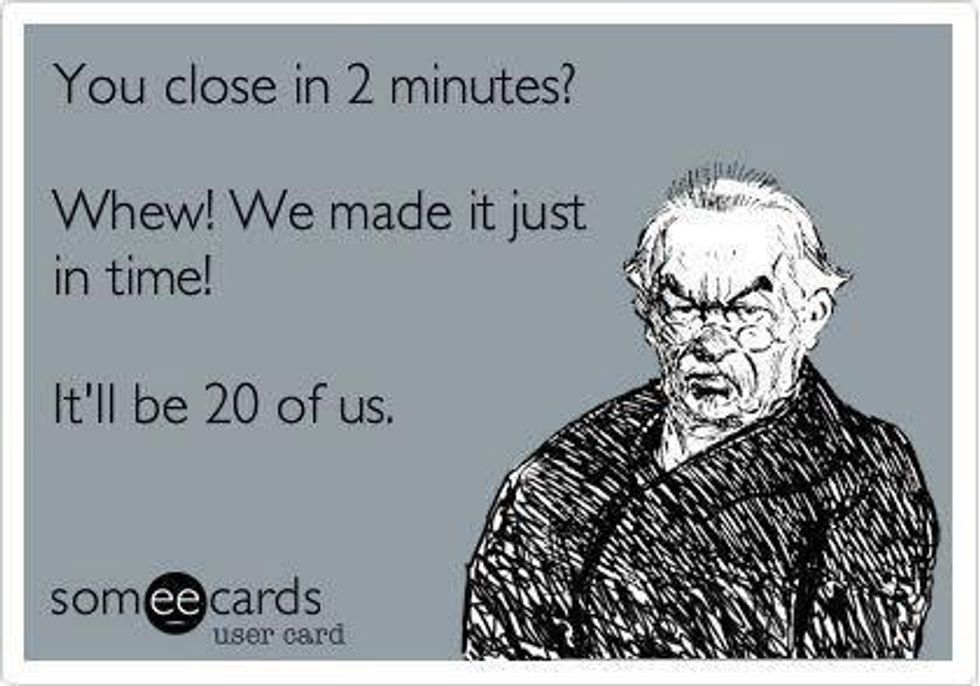Dining out is something we all do throughout our lives, but working in the restaurant business leaves you with a different approach. We all wish that we could trade shoes and let people see what it's really like to work in this industry. Here are some tips that will help those who have never worked in a restaurant understand the lives of those who have.
1. Reservations.
Majority, if not all, restaurants take reservations- so make them. It’s a two minute phone call that will avoid a potential wait time when arriving, especially on a busy night. With this being said, having a reservation does not mean the hosts hold a table for the entire day. If your reservation is at 6:30pm, arrive a few minutes before to be seated accurately. If you arrive at 6 o’clock on a Saturday night, don’t be surprised when the host tells you that you will be seated closer to your reservation time. After all, there were other people who made reservations. The last thing to remember what it comes to reservations is tardiness. If you are running late, which is natural, just simply give the restaurant a call. They will be more understanding and have better ability when it comes to saving a table for you than if you were to show up 30 minutes late and still demand to be seated immediately.
2. Booths.
We all understand the luxury that comes with sitting in a booth, it’s basically the same thing as sitting on your couch! Very few restaurants have all booths and that’s normal, which is why you might have to sit at a table once in awhile. The hosts hear “Can we get a booth?” over 50 times each day so if they say that there are not any available at the time, they mean it. You also have the option of waiting for the next available booth, but who would want to prolong an hour wait any more than they have to, right? Wrong. If a booth is so important, try giving a call ahead of time.
3. Self-Seating.
A restaurant is not the same as a food court, therefore, you may not pick your own table. The hosts are at the desk for a reason and the first thing listed in their job description is to seat guests at tables. Let them do their job, they love it. Not every table is available at the time you arrive and the hosts are responsible for planning the seating of the dining room. This means that they are taking you to that table for a reason. There are times when not all the servers have arrived or the only other table in the dining room is being held for a larger party. Believe me, they aren’t trying to upset you.
4. Wait Time.
The weekends are usually the busiest days in the restaurant business. When you come in on a Friday or Saturday night between 5:30 and 8:30, expect a wait. The wait time can vary from 30 minutes to an hour and 30 minutes. Do not be alarmed. It’s not the host’s fault that there are no open tables and multiple reservations, so please be understanding. Also, the hosts and managers do not have the ability to ask a table to hurry up or to please leave so don’t bother asking. If you happen to go over your quoted wait time by 30 seconds, don’t attack the hosts. They want you to sit just as bad as you do.
5. Sections.
This term may be unfamiliar to those who have not worked in a restaurant. Each server is given 3-4 tables that they are in charge of for the entire time they are on the clock. These tables are what they make their money off of and most times, they are limited to only these tables. This may be another reason why you are sat at a specific table. Taking turns is something we learn at a young age and this is one of those places where that applies.
6. Camping.
A term known in the restaurant industry as a table that sits forever. The average table sits for about an hour to an hour and fifteen minutes, meaning that the server will be able to get sat at that table again. Please be courteous of the business around you. Hearing “Oh my goodness, we haven't seen each other in 2 years!” translates to “We’re going to sit at your table until you close!” and lets the server know that they just lost a table. When a table sits for a long time, it affects the wait time and the server’s section. When multiple tables sit for an extended period of time, the wait time increases because of the lack of open tables. Think of the restaurant as one constant flow, every little thing affects the next step. Sitting forever also limits your server to one less table, resulting in the server missing out on potential money.
7. Large Parties.
Most times in a restaurant, the standard table sizes seat 2, 4, or 6. If you plan on arriving with a large party (7 or more) without a reservation, expect a longer wait time. This means that the staff needs to be able to arrange the dining room in a way that will be fit to accommodate a large group. If you're aware of your party size when you're on your way, just give the restaurant a call. A heads up never hurt anyone.
8.Recognizing Your Server.
Host: “Here are your specials for this evening!”
Guest: “We’ll take two waters and the free bread.”
Host: “Your server will be right with you.”
There are very few, if any, restaurants that have your server waiting up at the host desk to walk you to your table. The person seating you is not the one waiting on you for the evening. The uniform for the hosts and servers are different for that exact reason. Just give your server 2 minutes, they’ll be right there.
9. Basic Manners.
The first impression for how your experience is going to be while out to eat starts with when your server greets you. When your server asks how you are, the proper answer is not “We’ll have water and bread.” but instead, “We’re good, how are you?” and wait for them to reply. Manners go a long way, never forget that.
10. Tipping/Gratuity.
The single most important point of going out to eat. Merriam-Webster defines gratuity as "an amount of money given to a person (such as waiter or waitress) who has performed a service." The social norm for tipping, at least in the United States, is 20% of the total amount of your bill. If you feel so inclined to tip more, by all means, go ahead. What some may not realize is that servers make their income based on what their tables tip them, so try to keep this in mind the next time you decide to tip 12%.
11. Coupons.
Yes, they are great and everyone loves them but it’s different when it comes to a restaurant. Many people make the mistake of tipping on the amount after the coupon or discount has been removed. Wrong. Think of it this way- the server did just as much work as they would have if you didn’t have a coupon, so tip them accordingly. Be sure to calculate 20% of the total bill before the discount was taken off of the check.
12. Split Checks.
Be sure to let your server know at the beginning of your meal so they are able to split it up from the start. It’s difficult for them to have to sort through what 8 people had for dinner and then come over to the table with a stack of check books for everyone to sign. Also, don't forget to divide up the 20% gratuity amongst all the checks.
13. Server Vs. Kitchen.
Unfortunately, it’s possible for food to get mixed up or prepared incorrectly when out to eat at a restaurant. The most important thing to remember is that your server was not the one that cooked your meal. The server is not the same as the kitchen. We understand the frustration, but that does not mean that the server should have to suffer.
14. Closing.
When you look up a restaurant and see that they close in 15 minutes and you’re 10 minutes away, keep in mind that they may have already started closing the kitchen and therefore, do not expect a whole 4 course meal.




